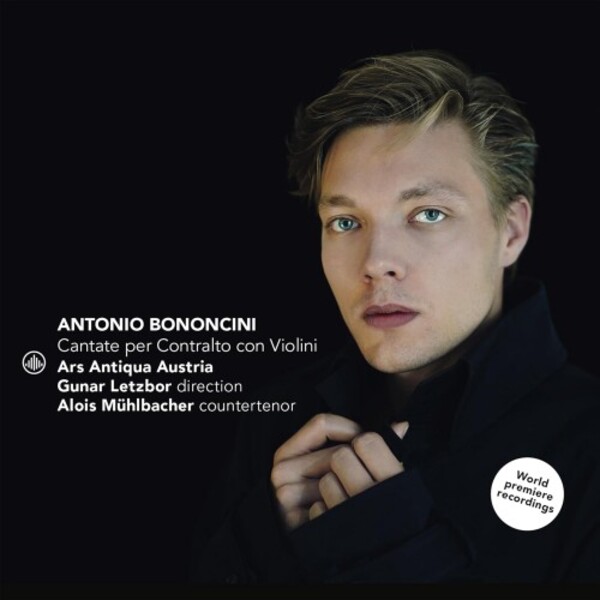A BONONCINI Cantate per Contralto con Violini
View record and artist detailsRecord and Artist Details
Genre:
Vocal
Label: Challenge Classics
Magazine Review Date: 03/2024
Media Format: CD or Download
Media Runtime: 57
Mastering:
DDD
Catalogue Number: CC72925

Tracks:
| Composition | Artist Credit |
|---|---|
| Lontananza |
Antonio Maria Bononcini, Composer
Alois Mühlbacher, Countertenor Ars Antiqua Austria Gunar Letzbor, Conductor |
| Tanto avezzo |
Antonio Maria Bononcini, Composer
Alois Mühlbacher, Countertenor Ars Antiqua Austria Gunar Letzbor, Conductor |
| Sopra l´orme d´Irene |
Antonio Maria Bononcini, Composer
Alois Mühlbacher, Countertenor Ars Antiqua Austria Gunar Letzbor, Conductor |
Author: Richard Lawrence
This recording was made in the monastery of St Florian, near Linz in Austria, where Alois Mühlbacher was a choirboy. In the crypt lies Anton Bruckner, who had himself been a chorister there and later held the post of organist. One wonders what Bruckner would have thought of these cantatas, which deal with the pains of love.
The composer here is not Giovanni Bononcini, the colleague and rival of Handel in early 1720s London, but his less famous younger brother Antonio Maria (1677-1726). The boys’ mother died a few days after Antonio was born; their father soon remarried but died in turn the following year, an hour after his wife gave birth to another son.
Not a good start in life for any of the boys; but Giovanni prospered and found employment at the Habsburg court in Vienna, where he was joined by Antonio. And it was there that these intimate pieces for voice and solo strings were composed in 1708. Each is laid out as a sequence of secco recitatives and da capo arias, with a surprise at the very end of the album. Bononcini shows considerable imagination in his settings of the apparently anonymous texts. The opening recitative to Lontananza ends with a chromatic twist at ‘Io piango’ (‘I weep’); the following aria begins with vigorous counterpoint for the strings which continues throughout. The second aria is for continuo only, until the strings enter with a postlude that might remind you of ‘Ev’ry valley’ from Messiah; the fourth and last features a solo violin.
The central aria of Tanto avezzo, a gentle siciliano, also has the strings deferred to the end. The surprise is ‘Torna, deh, torna’, the last number of Sopra l’orme d’Irene, where the secco recitative leads seamlessly into an angular aria, not da capo, that ends with another postlude for the strings.
Alois Mühlbacher sings these laments expressively, with smooth tone and accurate semiquaver runs. One can get used to the change of gear at the bottom of his register; less acceptable is his treatment of the da capos, which are more recomposed than ornamented. He is excellently supported by Ars Antiqua Austria: a special word of praise for the violinist Gunar Letzbor and the nice rubato on descending semiquavers that he introduces into the second aria of Sopra l’orme d’Irene. Texts are provided; a black mark for the absence of translations.
Discover the world's largest classical music catalogue with Presto Music.

Gramophone Digital Club
- Digital Edition
- Digital Archive
- Reviews Database
- Full website access
From £8.75 / month
Subscribe
Gramophone Full Club
- Print Edition
- Digital Edition
- Digital Archive
- Reviews Database
- Full website access
From £11.00 / month
Subscribe
If you are a library, university or other organisation that would be interested in an institutional subscription to Gramophone please click here for further information.




